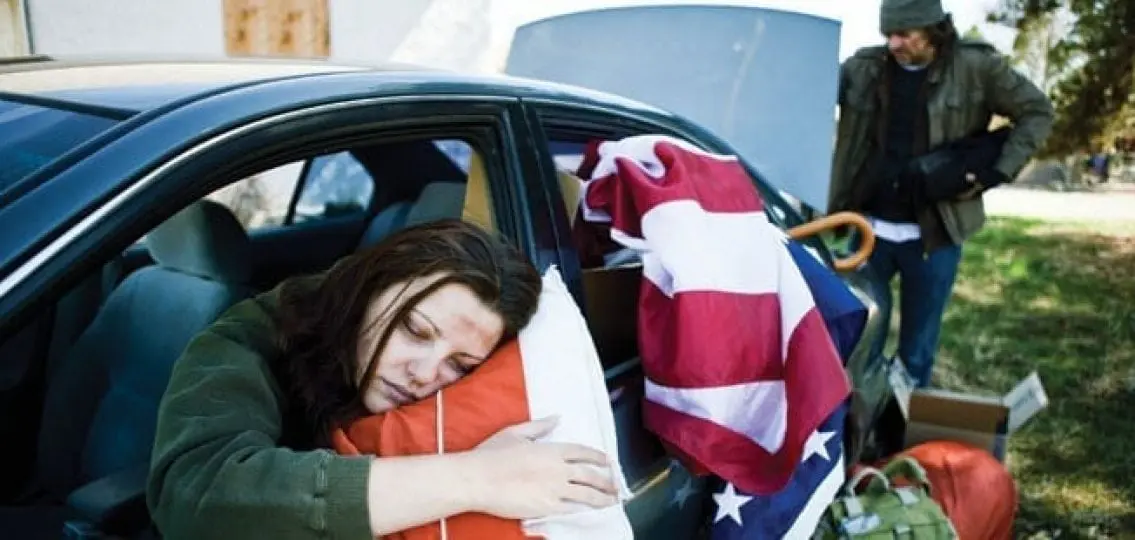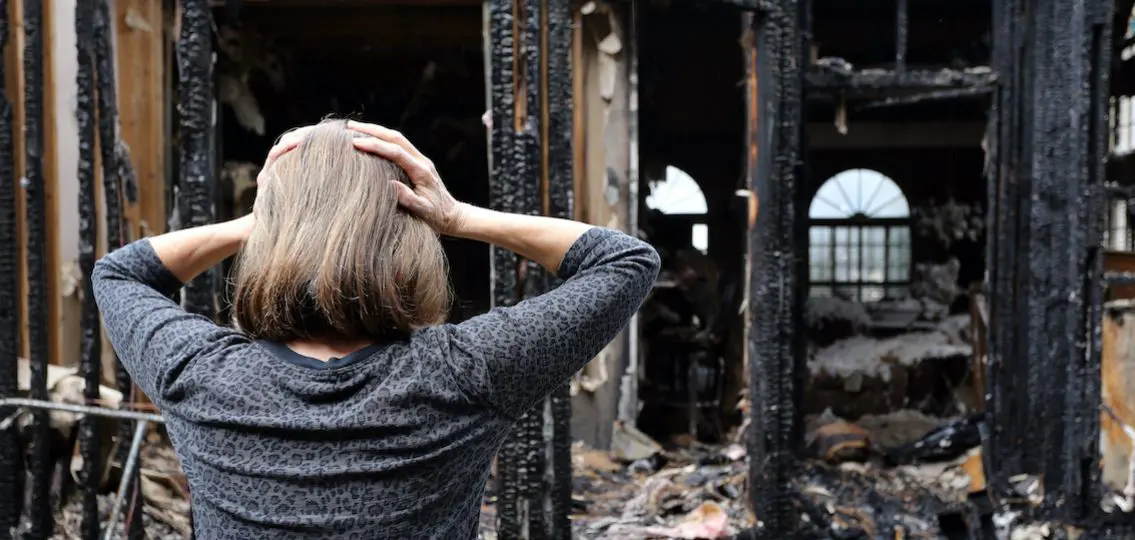Everyone knows that it’s a matter of when, not if, there will be another unexpected disaster. In 2017, natural disasters affected over 95 million people, killing over 9,000, and costing over $300 billion in damages in the US. Currently, wild fires are destroying much of California, Oregon, and Washington. So let’s prepare our families and homes now to protect us from losing our loved ones and our biggest assets, our homes.

My daughter Nicole, who is an Emergency Medical Services liaison and ER doctor, recommended I create two Go Bags: One with things we will need to survive for a week; A second for things that we use daily and can’t pack away ahead of time.
Making my Go Bag 1 was easy. I collected items around the house and put them in an old back pack.
My Go Bag 1 includes:
- clothes
- contact lenses
- toiletries
- tools
- food and water
Then I packed a sleeping bag, blankets, and a pillow in my trunk so they are always with me and ready for use.
Making my Go Bag 2 required some planning because the items I put in this Go Bag were either things I use every day or things that are on display in my house. Since I can’t pack them away ahead of time, I made a list of things to take, including:
- medication
- jewelry
- cash
- precious framed photos
Remembering what to grab during an evacuation can be stressful and that’s why having a list will help me focus on what to take when I’m in survival mode. I know where these important items are, but what if I’m not home and a family member or friend has the daunting task of finding and selecting things off my list?
During a devastating storm that destroyed my mother’s beach house back in the ‘80s, my brother-in-law was the only one at her home when the wrecking crew arrived to demolish the entire building. He ran into the house to collect “important” items, but carried out her TV and stereo system. What’s important to me—or you—may not hold the same importance for others.
When you’re choosing what you would want to save in a disaster, take photos of the items in their locations.
In an emergency, you won’t have to make decisions about what to take or hunt for anything. I even circle the item and describe where it’s located to make it even easier for everyone to find. Then I staple the list and photos to a cloth bag and hang it on my back door, so it’s always there. Knowing that the items on my list will require three cloth bags, I tucked two extra cloth bags into the Go Bag.
While you put together your Go Bag 1 and make your lists for your Go Bag 2, you will probably realize that you have more things that you may want to save than you will have time or physical ability to take. For me, it was my collection of 200 photo albums and 450 family videotapes. I know I can’t carry that many albums and 8mm and VHS tapes in an evacuation, so I scanned all of them. It took two years, but now I have all of my photos and videos in digital formats backed up to the cloud.
Inventory of Belongings
Creating the Go Bags also made me realize how much stuff I have and that I wouldn’t be able to remember everything to list on an insurance claim form. To avoid that problem, I took photos of every item in my house. First, I took a photo of the room, then I zoomed in to photograph every book, every decoration, and contents of every drawer and cabinet. For antiques, artwork, and jewelry, I took photos of appraisals and stored them with the photos to ensure that my insurance company will reimburse me for all of my belongings.
As our climate heats up and our droughts become more severe, natural disasters will become the norm. Set up your Go Bags for your car and house now, so you and your family will make smart choices if you need to evacuate your home.
Checklist for Go Bags
Go Bag 1 for your vehicle
Fill an old backpack or suitcase with things you’ll need to survive in the case of an evacuation. This bag has things that you’ll need to survive for 3-5 days. Keep this in your trunk of your vehicle.
__ First aid kit
__ Food (high protein, energy boosting, non-perishable, along with plates/utensils)
__ Personal hygiene (toothbrush/paste, shampoo/conditioner, tampons/pads, contact lenses/ cases/solution, etc.)
__ Water (3 gal/person and water purification tablets)
__ Tools (wrench, screwdriver, saw, hammer, can opener, phone chargers, back-up computer drives)
__ Battery-powered radio and flashlight, extra batteries
__ Clothes (long pants, sweatshirts/jackets, underwear, socks, sturdy shoes, hats, etc.)
__ Sleeping bag/pillow
__ Paperwork (copies of IDs, insurance policies, prescriptions, important phone numbers)
__ Pet items (food/bowls, vaccination records, leash)
Go Bag 2 for your home
This bag contains a list of things to grab when you evacuate. This will help you remember important items during the chaos. Staple this list to a cloth bag or backpack and store it where you can quickly locate it.
__ Precious jewelry
__Cash
__ Medications/medical equipment
__ Important documents (mortgage, insurance, investments, etc.)
__ Computer drives/laptops/back-up drives
__ Personal mementos
__ Photo albums/Videos
__ Framed photos/awards
__ Artwork





